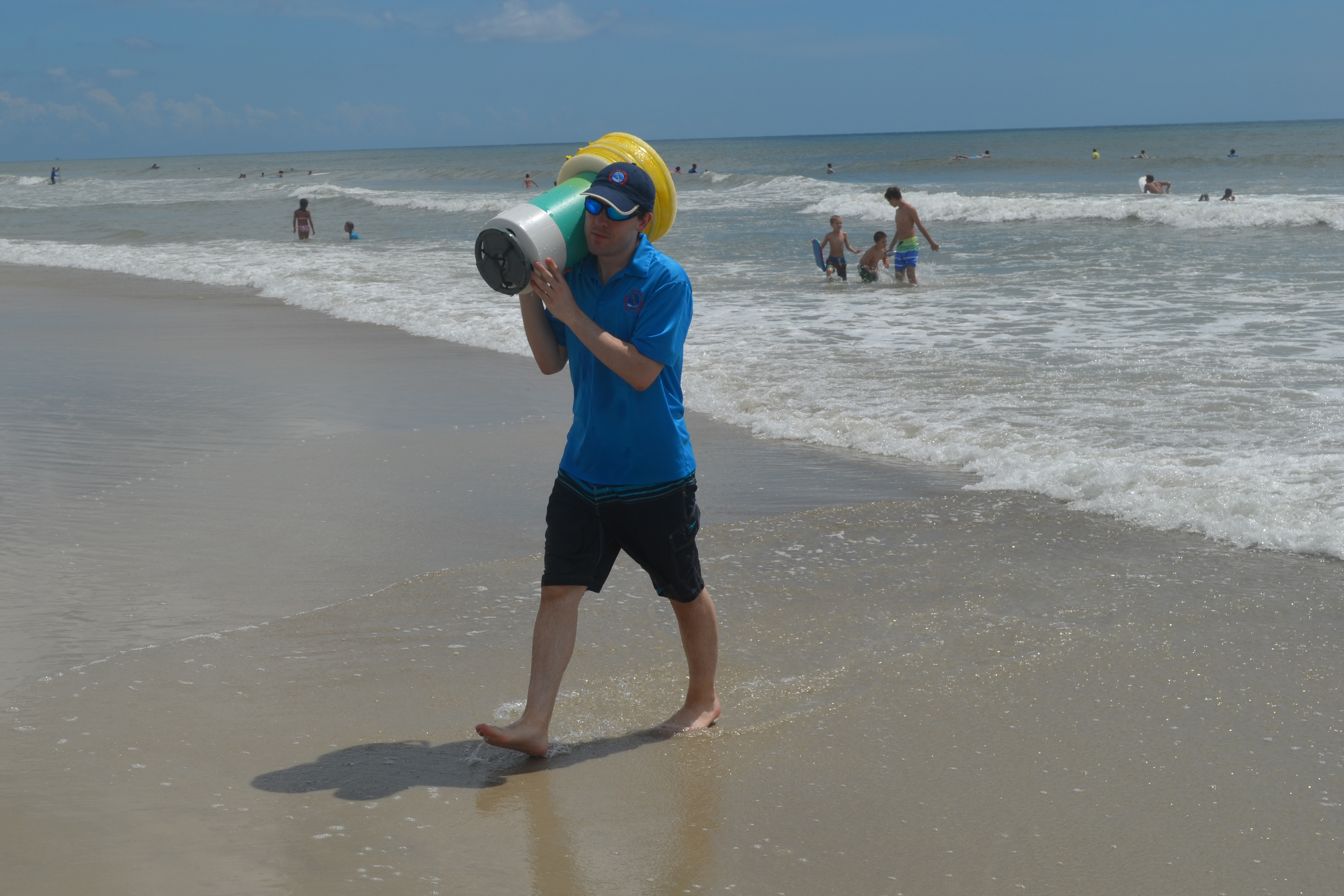Buoyant and light, the drifters seem pretty ordinary as they bob up and down along the shore, but equipped with GPS to track movements and designed to float like a person, the simple technology will help researchers understand deadly rip currents and inform the public of the safest way to enjoy the beach.
Spencer Rogers, coastal specialist with North Carolina Sea Grant, built the drifters with graduate student Cobi Christiansen at the University of North Carolina Wilmington’s Center for Marine Science.
International rip current researcher Rob Brander, based at the University of New South Wales in Sydney, is working with the Sea Grant program during a summer research sabbatical in the United States this summer. Also known as Dr. Rip, he said this is one of the first attempts to gather information about East Coast rip current patterns.
Rogers said most of the existing research occurs in areas where rip currents are more predictable, compared to sporadic development off East Coast shorelines.
“The easy research is done where there are big, fixed rips every day,” Rogers said.
Some prior research in other areas suggests that rip currents follow a circular course more often than a straight path offshore into deeper waters, which could change the common recommendation to escape by swimming parallel to the shore.
“Traditionally, we’ve always told people to escape the rips, swim parallel to the beach, right? These circles are telling us maybe you should just tread water and stay afloat,” Brander said.
Data collected by the drifters will reveal if East Coast rips also move in circuits but in the meantime, Rogers said his advice remains to exit as soon as possible if trapped in a rip current.
“We think the best recommendation is still to get out of it as quickly as you can, but there are certain times where understanding that these circulation cells exist, you can put that understanding to your best advantage,” Rogers said.
Brander will join the Sea Grant team for the next three weeks as they wait for word from the National Weather Service in Wilmington, forewarning of ideal rip current conditions. Lifeguards from New Hanover County beaches, including Wrightsville Beach Ocean Rescue, will also keep an eye on the water for emerging rip currents.
“You need to be right there and jump on it, within minutes, for the worst conditions,” Rogers said. “We need to get some bad days, so we’re perfecting the methods [now] but the really interesting work will be when we’re on call and we get some very serious rip currents that are a threat to life.”
Rogers expects lower rip current activity at Wrightsville Beach so soon after the beach renourishment project.
“Right now, Wrightsville Beach has very few because the beach nourishment project buried the sandbar. Without the sandbar, there are very few rip currents,” Rogers said.
Wrightsville Beach Ocean Rescue Captain Jeremy Owens said while rip current activity has lessened, lifeguards still regularly spot them.
“We’re still seeing some rips. It has leveled the sandbar out but we’re still definitely having a good bit of rips and the further away from renourishment, the more the sandbar will form,” Owens said during a July 24 phone interview.
Owens said the Sea Grant team is scheduled to deploy the drifters at Wrightsville Beach in early August.
Brad Reinhart, meteorologist with the National Weather Service in Wilmington, said two rip current drownings have been reported this year—one in Holden Beach and one in Myrtle Beach.
Brander and Rogers both stressed the surest way to enjoy a safe swim is to go to a guarded beach.
“Drowning on lifeguard-patrolled beaches are very rare. One of the safest things to do is always swim on a guarded beach,” Rogers said.
email [email protected]




